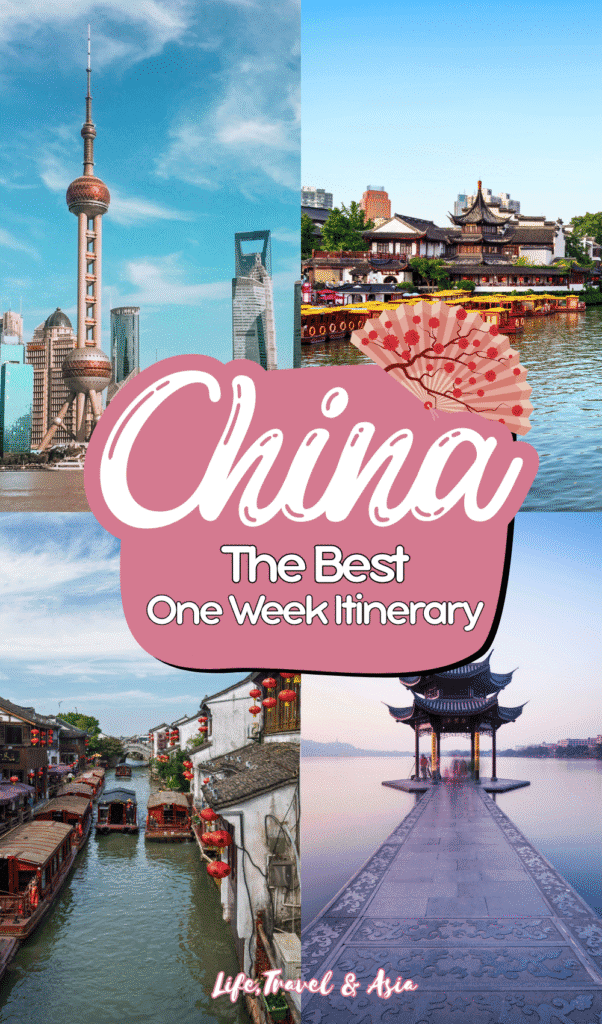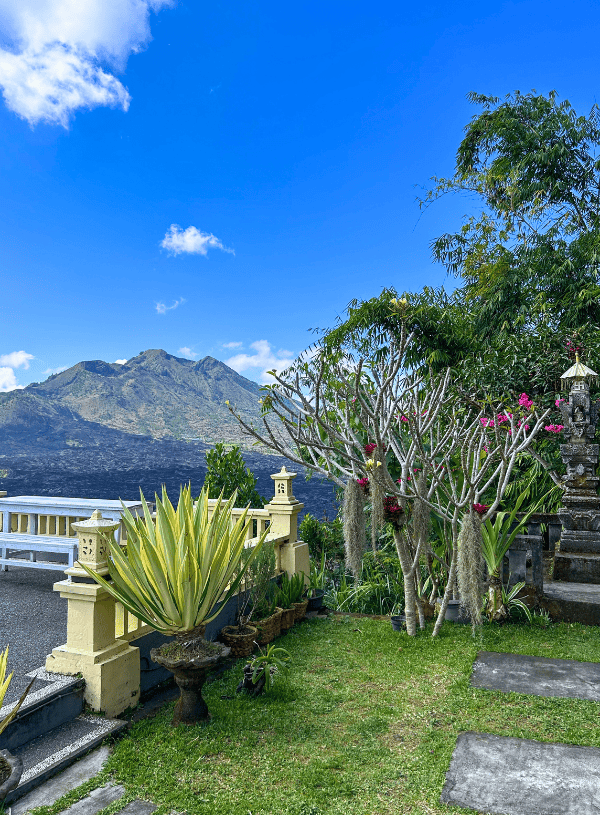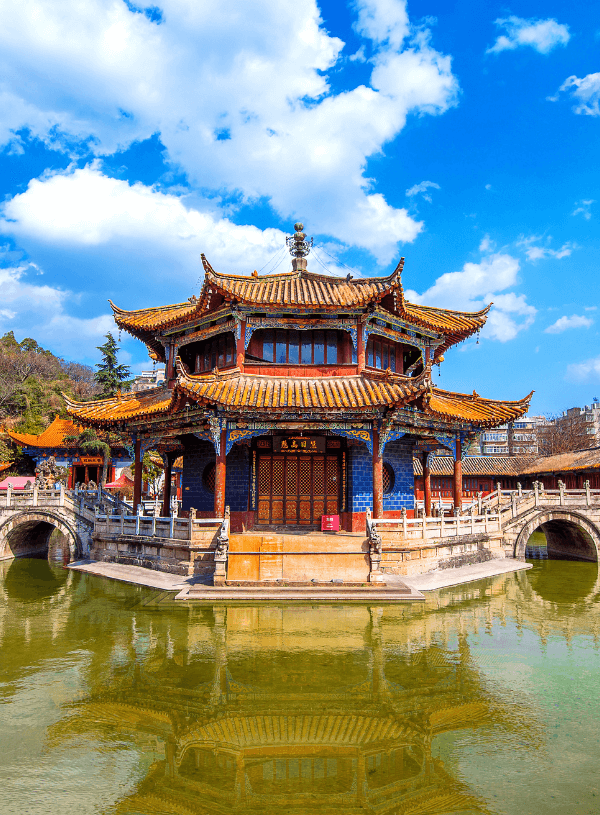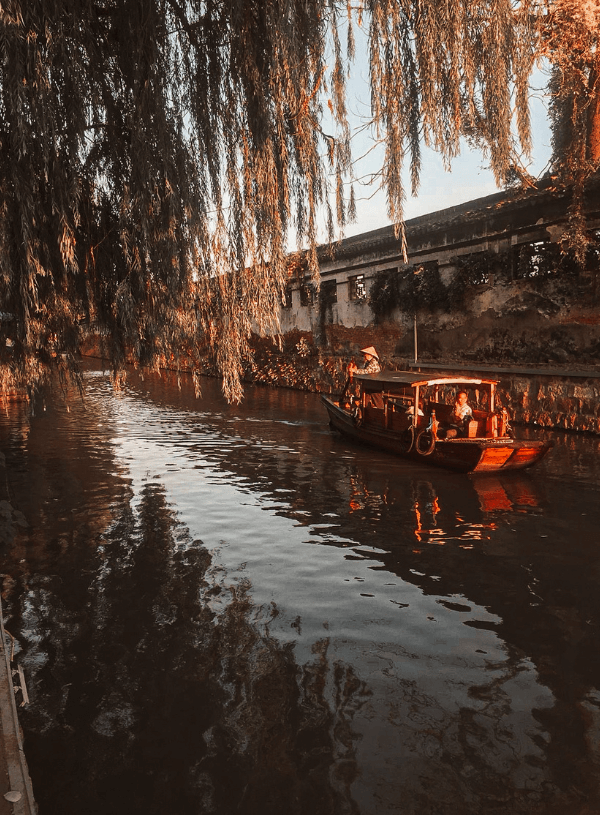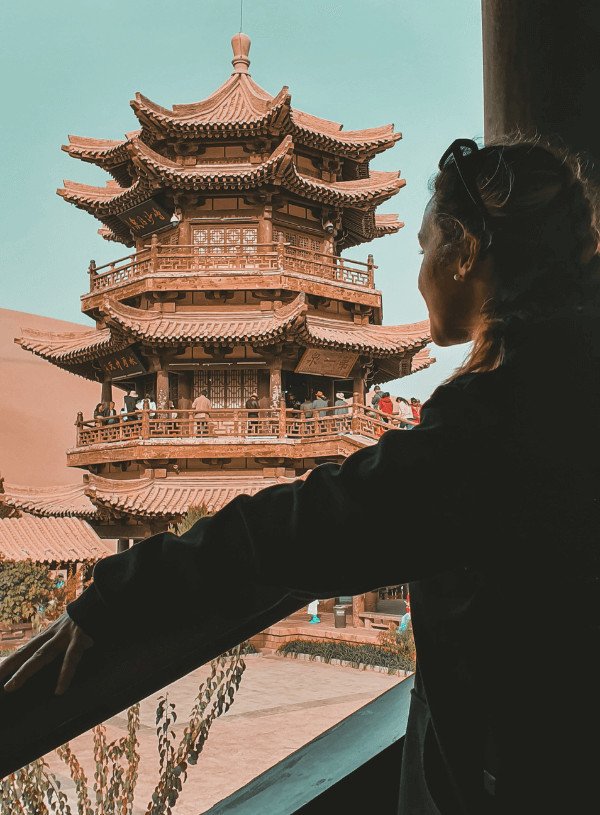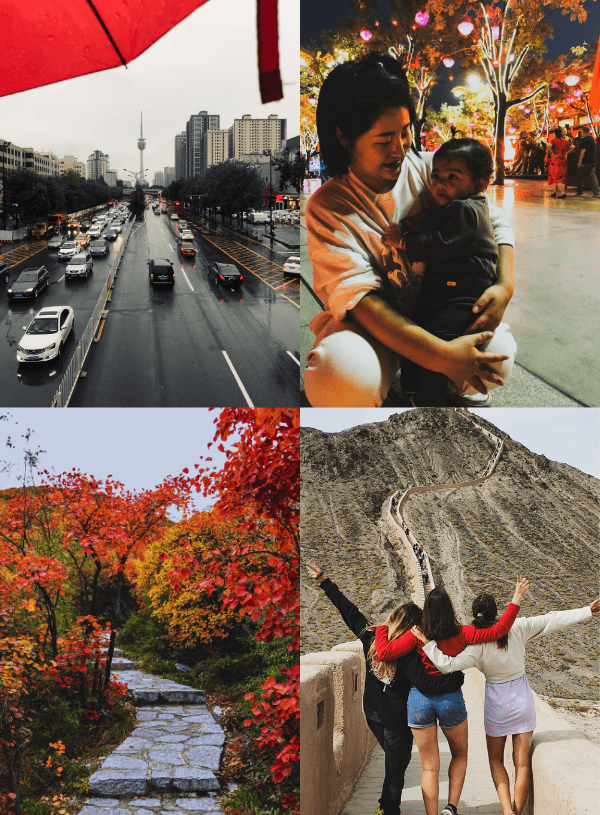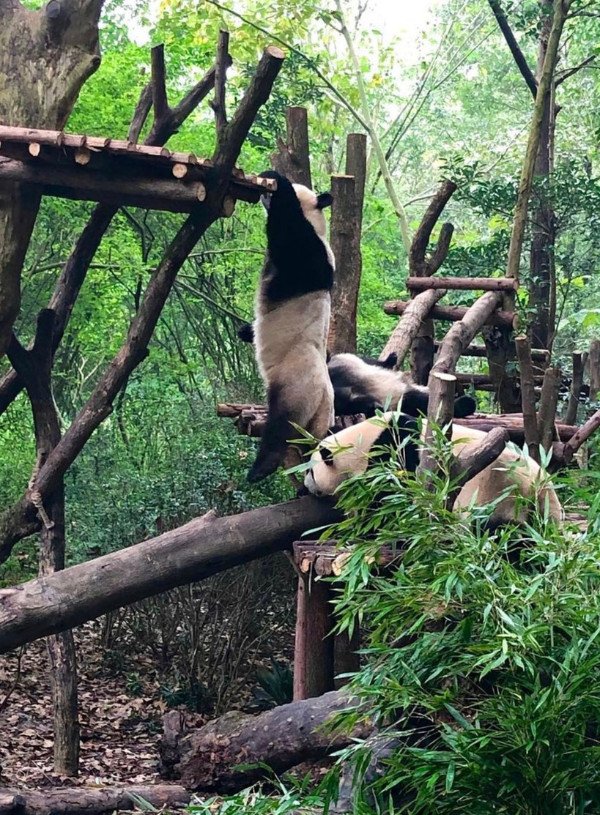The Perfect Week in China: 7 Days Exploring Skyscrapers, Canals, City Walls & Lakes
Last Updated on June 18, 2025
I know what you’re thinking: “I only have one week in China, and I’ll end up rushing from place to place without actually enjoying it.” But that’s not how it has to be, especially if you pick the right cities.
This was actually my very first trip around China, and what surprised me most was the variety of experiences you can have without going far. In just a few days, I went from shiny skyscrapers to canals, from ancient city walls to tea-covered hills. All the cities are connected by fast train rides, and there are no long travel days.
This post will help you plan a smooth 7-day trip through four cities that are close together but feel completely different: Shanghai, Suzhou, Nanjing, and Hangzhou. If you want to visit a part of China, but you’re short on time, this itinerary is the best.
This article may contain affiliate links. This means that if you purchase through one of the links, I may be paid a small commission at no extra cost to you. Thank you for supporting the blog and allowing me to keep sharing meaningful travel experiences with you.
Don’t have time now?📌 Save it for later!
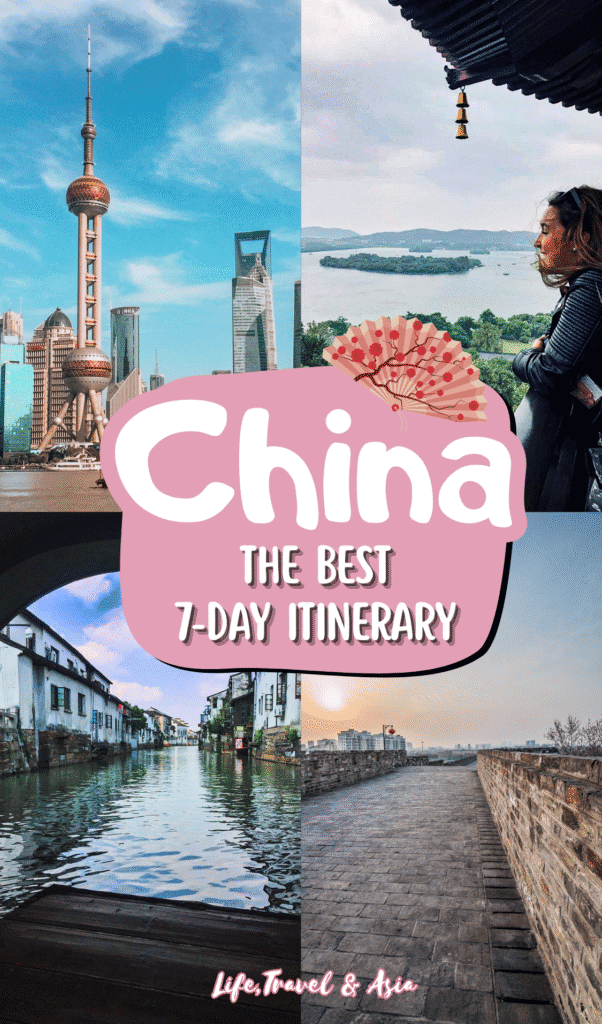
Planning Your Trip
1. Key Things to Know
2. Landing in China
Most direct or international flights to China land in Shanghai (Pudong or Hongqiao). Both airports are great for first-timers as staff are used to tourists, and it’s usually easier to navigate arrival procedures like withdrawing cash or buying an eSIM.
If you’re wondering whether to fly with a Chinese or an international airline, I’ve always chosen Chinese airlines and never had any delays or major issues.
Below are some of the highest-rated Chinese airlines. I’ve flown with Hainan Airlines, China Eastern, and China Southern—all three felt reliable and comfortable.
• Air China (international & domestic)
• China Eastern Airlines (international)
• China Southern Airlines (based in Guangzhou)
• Hainan Airlines (mainly Beijing and Shenzhen routes)
3. How to Get From The Airport to Your Hotel
As soon as you land and head for the exit, you’ll be approached by well-dressed guys offering you a “ride”—just say no.
Instead, look for the official taxi signs near the exit and follow them. Have your hotel or guesthouse address printed (in Chinese characters) or clearly written on a piece of paper, and show it to the driver. Before you pull away, make sure the meter is on.
The last time I landed in Shanghai, I paid around 200 yuan to get to the city center.
4. Where To Stay in China
To book stays in China, I usually use Trip.com or Booking.com, both work very well! Just be sure to check the most recent reviews and message the property before you arrive to avoid any surprises.
In some areas, places can close unexpectedly for renovations, and a few smaller hostels or guesthouses might not accept foreign passports. So double-check availability and policies before you land.
Below are some hotels I’ve stayed in the cities included in this itinerary and liked during my recent trip to China:
Shanghai: Hotel Ocean — hands down one of the best international breakfasts I’ve found!
Suzhou: Pace Hotel Suzhou – right in the heart of the old district in Suzhou, close to the main sights.
Hangzhou: Hangzhou Lanshe Hotel – some of the most comfortable rooms I’ve slept in while in China.
Nanjing: SSAW Boutique Hotel Nanjing Grand Theatre – great location close to the Confucius Temple and an abundant Chinese and Western-style breakfast.
5. How To Get Around Between Cities: High-Speed Train
I love high-speed trains in China; they’re my favorite place to nap at over 200 km/h.
For this itinerary, you’ll only need to travel by high-speed train to move between cities, and every ride is under 3 hours.
If possible, I recommend booking late-afternoon trains. That way, you’ll have the whole morning and early afternoon to explore without rushing.
To book your train tickets in China, you can use Trip.com. Make sure to book train tickets in advance, because doing it at the train station is an absolute nightmare.
6. How To Get Around In Chinese Cities
Subway
The subway is the easiest and most efficient way to get around Chinese cities. Below are a few handy tips to help you navigate the Chinese subway system:
- Bag check: Be ready to place your bag through a detector whenever you take the subway.
- Metro Fare: You can find the ticket price you need in your Metro app or by using Maps on your iPhone. Enter your destination and starting point, choose “directions by subway,” and voilà—your fare will appear along your route (Machines have an English option, and you can pay through Alipay)
- Bilingual Signage: All subway stops are labeled in Chinese characters and their alphabetic transcription (pinyin), so you’ll always know where you are.
Taxi
Taxis can be a convenient way to get around cities in China, especially when going from train stations or the airport to your accommodation. While they’re not always the best option for daily use, thanks to the traffic in many Chinese cities. Here are a few tips to avoid taxi scams:
- Avoid hunting for taxis in popular or touristy spots.
- Have your destinations available to show to drivers.
- Carry some cash in case your app or connection fails.
- Download DIDI if you prefer to avoid the language barrier and possible scams.
Bus
Buses are cheaper than taxis if your budget is tight and you have an adventurous soul! Subway and taxis are usually a better option when your time is tight. See below some tips to navigate the bus system in China and make sure you arrive where you need to be:
- Use apps to find your route: Tools like Rome2Rio, Google Maps, or Apple Maps can help determine which bus to take.
- Get confirmation from locals: Ask your hotel or hostel staff to confirm if a particular bus goes to your destination. It’s always better to double-check!
- Ask the driver: When you’re at the bus station, show the driver your destination (written in Chinese) and make sure he says OK!
7. Best Time To Visit China
The best time to visit China truly depends on the places you will be visiting. Considering that the beauty of at least two of these cities lies in their natural scenery, I highly recommend planning your trip to China in the spring, especially from April to May.
This is the perfect time to see these cities at their best: monuments decorated with cherry blossoms, warm sunshine filling the air, and an atmosphere that makes you want to stay outside late into the night.
If you’re looking for more details on traveling to China, my comprehensive travel guide could be precisely what you need. You’ll find everything from visa requirements and the best times to travel to tips on language, etiquette, and so much more.
Why Is This the Best China Itinerary If You Have One Week?
Shanghai as a first stop: Pudong International Airport is the ideal place to land in China. Many international flights come here, and starting your trip in a more foreigner-friendly city helps you adjust to China’s flow and avoid some of the culture shocks you might face (especially if it’s your first time there).
Short Train Journeys: The longest train ride is from Nanjing to Hangzhou, which takes about two to three hours. This gives you plenty of time to enjoy each city without 10-hour journeys. Plus, the short travel times help keep train ticket prices low.
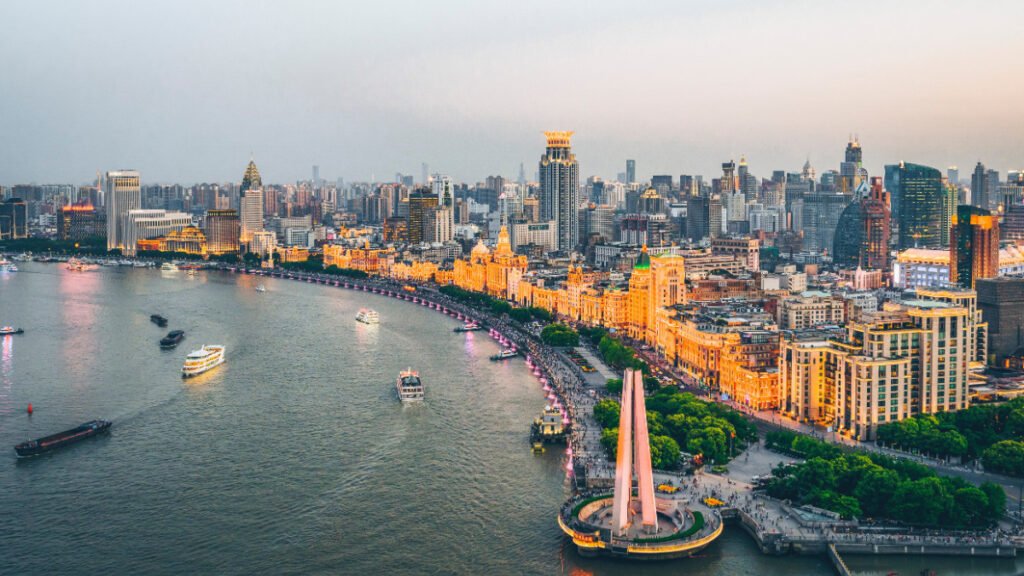
Well-paced cities: if there’s something I hate when traveling, it’s feeling rushed. Do you know that awful awareness that you missed something unmissable because you ran out of time? In this case, forget it! The sights are all close, and you will have plenty of time to wander around and soak in the vibe of each location.
Diversity: These four cities are close, yet so different. Shanghai represents the high-tech Chinese cities we imagine when thinking of China. Suzhou appears to be a serene, laid-back water town. Nanjing takes you back to some of the most significant moments in its history as the capital of the Republic of China. Finally, Hangzhou’s landscapes seem to have been painted by a nostalgic Chinese artist still devoted to classical beauty, untouched by modernity.
7-Day China Itinerary
I took this tour in 2019, traveling between Shanghai, Jiangsu, and Zhejiang provinces. The four cities on the itinerary are all used to foreign tourists, so it works perfectly for first-timers.
Moreover, you won’t have to plan any weird van or bus rides, which makes everything easier if you don’t speak Chinese. I spent two days in Shanghai, two days in Suzhou, two days in Nanjing, and one day in Hangzhou. If you only have 7 days available, you can stay only one day in Suzhou or skip Nanjing.
Shanghai – Old vs. New, City Temples & Big City Life
Tickets & Tours in Shanghai
Day 1. Laoximen, Xintiandi & Yuyuan Old District
What I love most about Shanghai is how the old and the new blend so effortlessly. You can be at a restaurant and see a super stylish Chinese girl (probably a millionaire’s daughter) sitting next to a loud local family sharing ten dishes at once. That’s Shanghai.
One of the best ways to feel this contrast is by walking from Laoximen to Xintiandi. In Laoximen, you’ll find old Shikumen houses — grey, low-rise buildings that used to be traditional homes. Then suddenly, you hit Xintiandi: polished, modern, and full of trendy cafés, upscale restaurants, and fancy boutiques.
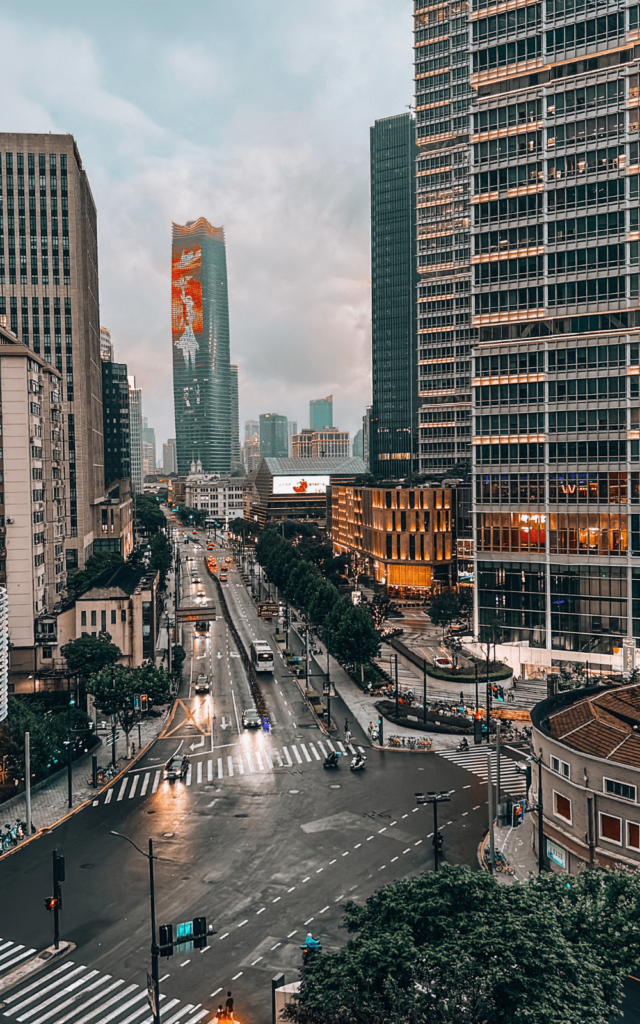

From there, you can head to the Yuyuan Old District, near one of the city’s highlights: Yuyuan Garden. This is probably where you’ll spot the most Western faces during your trip.
You’ll also come across Chinese ladies dressed in Tang Dynasty costumes, posing for pictures with traditional Chinese architecture as their backdrop. The scent of spicy skewers and freshly steamed xiaolongbao fills the air. Honestly, it’s the perfect place to grab lunch or dinner.
Day 2. Yuyuan Garden, Buddhist Temples, Tianzifang & The Bund
Yu Garden is the ideal morning visit, a peaceful oasis built during the Ming Dynasty. Yes, it can get crowded. Try to make your way through it early in the morning to experience the garden at its best. You’ll find a beautifully designed and elegant garden. Pavilions straight out of a painting, and tiny stone bridges wrapped in that soft, dreamy mist they pump in for effect.
From there, it’s time to check off a must-do in China: visiting a couple of Buddhist temples. Even if you’re not super into temples, the Jade Buddha Temple and Longhua Temple are worth a stop. I’m not usually big on city temples either, but wandering through their quiet halls, watching people light incense and pray, it’s a beautiful spiritual experience.
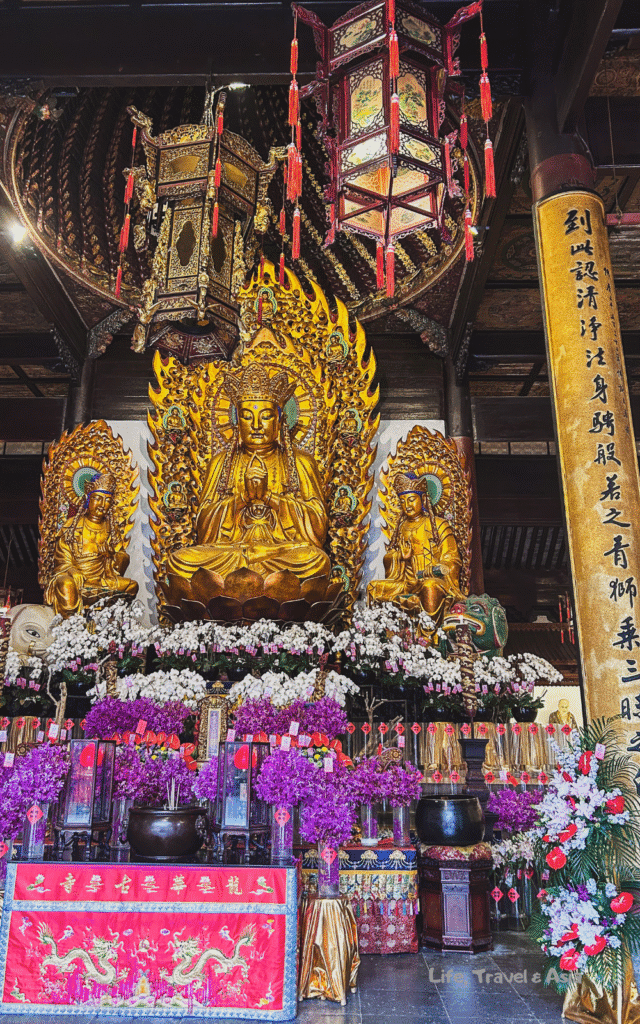
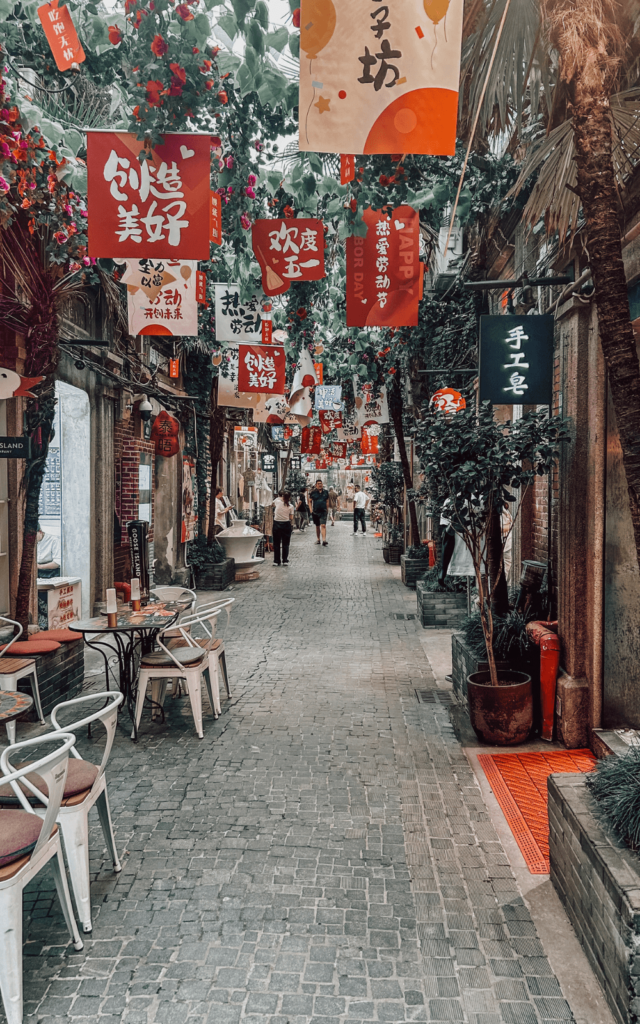
In the afternoon, head to Tianzifang. This is Shanghai’s version of an artistic neighborhood: narrow alleys, hanging plants, cute shops, and little cafés tucked into corners. Don’t be surprised if you walk into a café and find the barista painting something…it’s probably his gallery, too.
Finish the day with a classic: the Bund. It’s touristy, but…it’s the Bund. The skyline sparkles, boats cruise by on the river, and everyone is taking photos like their life depends on it. It’s chaotic, loud, and just the perfect Shanghai evening.
More About Shanghai
- Solo Travel in Shanghai: How to Plan & 12 Best Things To Do
- 1 Day In Shanghai: Discover the Old and Modern Sides of China’s Financial Hub
- Shanghai Travel Guide: A 3-Day Itinerary of Lights, Local Flavors, and Temples
- Zhujiajiao Itinerary: Day Trip From Shanghai to One of The Most Enchanting Water Towns
Suzhou – Canals & Water-Town Vibes
Tickets & Tours in Suzhou
Day 3. Humble Administrator’s Garden, Suzhou Museum & Pingjiang Road
Even though modernization has had an impact on Suzhou, this ancient water town hasn’t lost its charm. With pretty canals, stone bridges, and cobbled alleys, it still has that dreamy, postcard vibe that both locals and curious travelers fall in love with.
You can’t say you’ve really been to Suzhou without getting lost (figuratively, but maybe also literally) in its most iconic garden: the Humble Administrator’s Garden. Yes, it’s crowded — but worth it, it’s like stepping into a Chinese scroll painting.
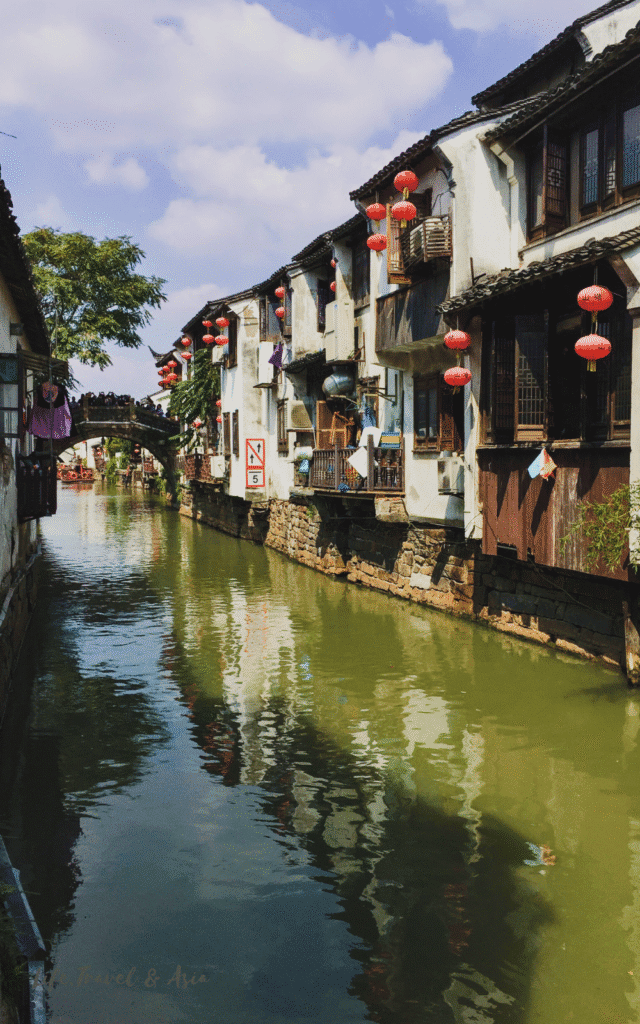
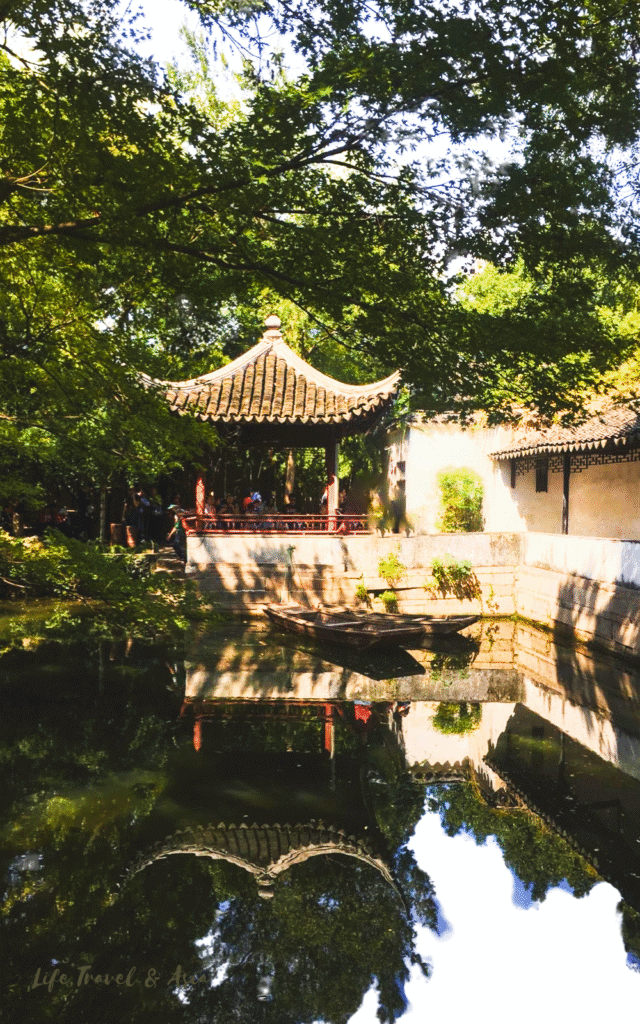
Next, don’t skip the Suzhou Museum (even if you’re not a museum person). Designed by the legendary IM Pei, it’s where traditional Suzhou elements, such as white walls and courtyards, meet sleek minimalism. The building itself is honestly the star, but inside you’ll find a collection of historical treasures, all with English signs.
Suzhou is also one of those rare cities that invite slow travel. You can walk for hours without even realizing it. Pingjiang Lu and Shantang Jie are perfect for aimless wandering. And if your feet need a break, you can hop on a canal boat ride.
Day 4. Tiger Hill, Twin Pagodas, and the Garden of The Master of the Nets
You’ll need at least half a day to explore Tiger Hill. Here is where Suzhou’s founder, He Lu, was buried, and locals still see it as a place of deep historical and cultural meaning. The real highlight here is the Cloud Rock Pagoda, which leans slightly like a Chinese version of the Tower of Pisa. However, the whole site makes for a beautiful way to spend the morning surrounded by nature.
Next, head back toward the city center to check out the Twin Pagodas. These two slender towers, once part of a Buddhist temple, are one of the few surviving double-pagoda sites in China.
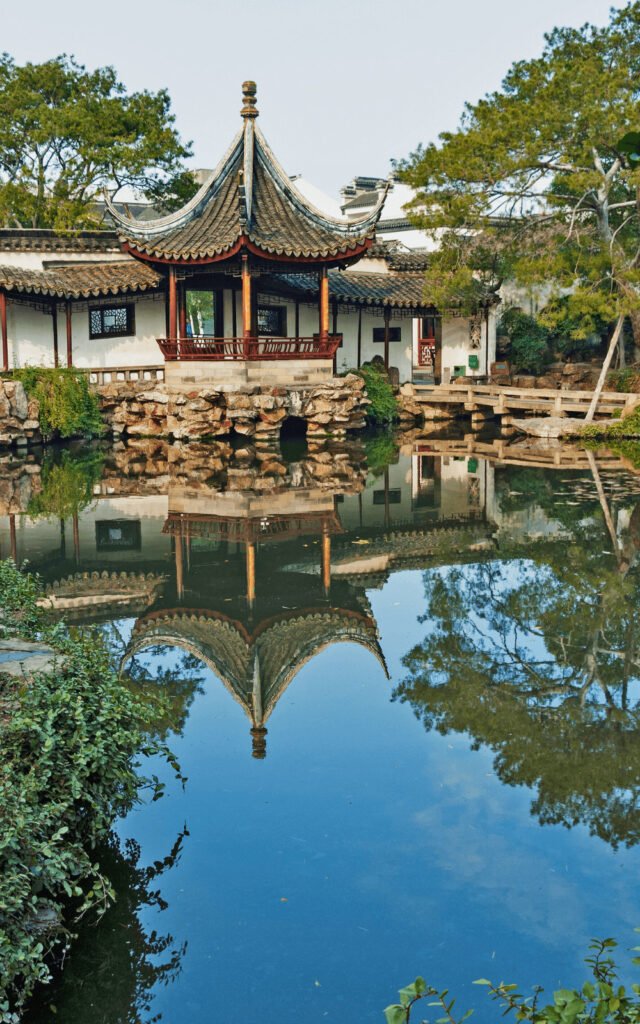
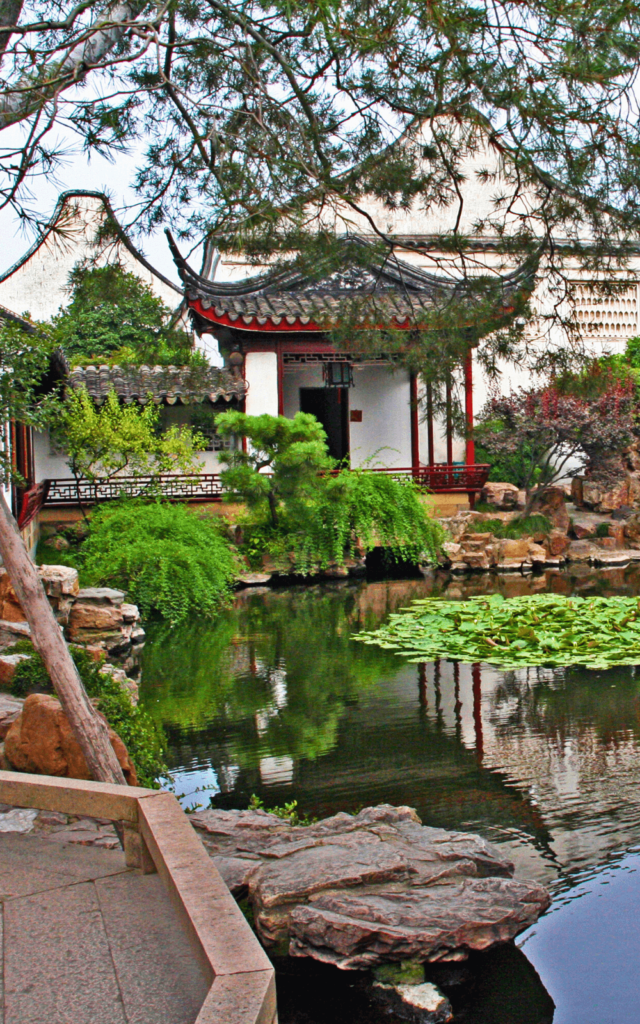
In the afternoon, you can explore the Master of the Nets Garden. It’s one of Suzhou’s most admired classical gardens and a UNESCO World Heritage Site. The way the designers play with space and perspective makes it feel like a private paradise.
And if you still have time before your train, visit the nearby Couple’s Garden Retreat. It’s lesser-known, calm, and full of charm.
3. Nanjing – China’s Underrated Ancient Capital
Tickets & Tours in Nanjing
Day 5. Purple Hill, Fuzimaio, Zhan Garden
Purple Mountain makes for the perfect morning visit in Nanjing. It’s named after the soft purple and golden hues that color its forests at sunrise and sunset. This area is home to some of the city’s most important historical landmarks, each telling a piece of China’s rich past.
Further up the mountain, you’ll reach the Sun Yat-sen Mausoleum: the highlight of the site dedicated to the founder of the Republic of China. It’s a bit of a climb, but the panoramic views make it worth it. Close by is Linggu Temple, a Buddhist complex known for its Beamless Hall, built without a single beam, and the towering Linggu Pagoda.
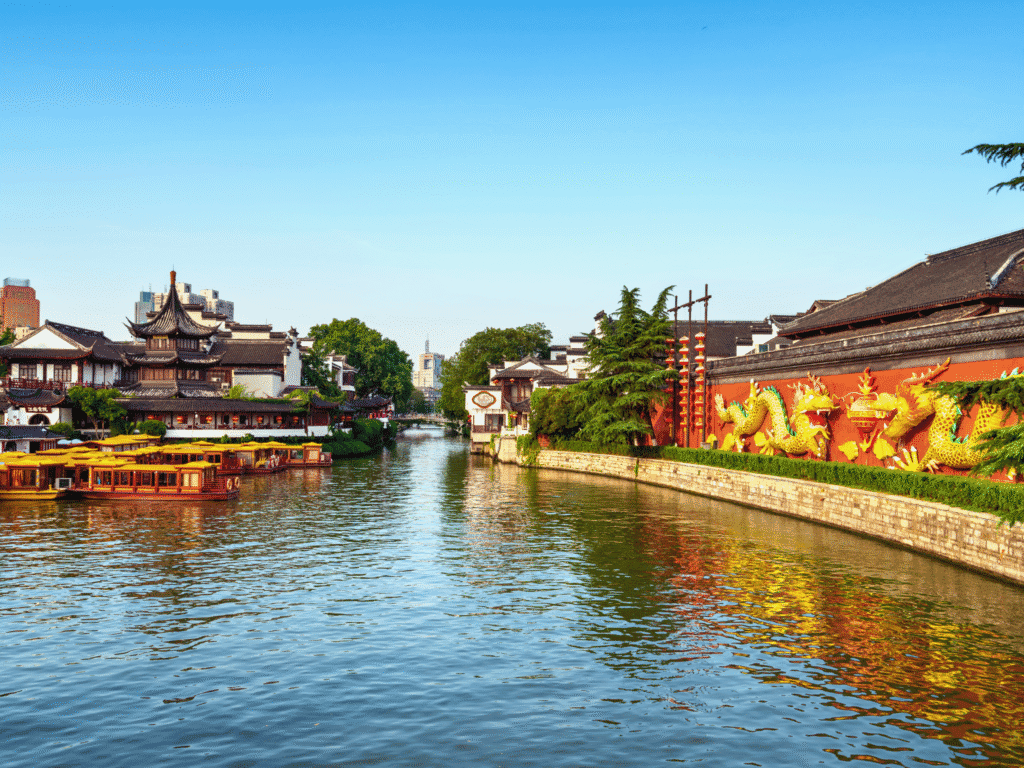
In the afternoon, you can explore Zhan Garden, a smaller, quieter version of Suzhou’s classic gardens. It’s a peaceful Ming-era retreat that also houses the Taiping History Museum.
The Confucian Temple, Fuzi Miao, is located along the Qinhuai River, and it’s the perfect late-afternoon or early evening spot. Once China’s top center of Confucian learning, it’s now a mix of history and vibrant nightlife.
The pedestrian area around the temple is full of life, with restaurants, shops, and colorful lanterns lighting up the streets. Stay for dinner or hop on a short river cruise; it’s one of Nanjing’s most charming spots at night.
Day 6. Nanjing Museum, Jiming Temple & Parks
Nanjing Museum is one of the largest and most impressive museums in China. The architecture itself is worth the visit. Inside, you’ll find 12 curated galleries that cover everything from ancient Chinese art and porcelain to silk-making and contemporary works.
In the afternoon, head north toward the scenic Xuanwu Lake area, starting with a visit to Jiming Temple. This active Buddhist temple is both a spiritual and picturesque highlight of Nanjing.
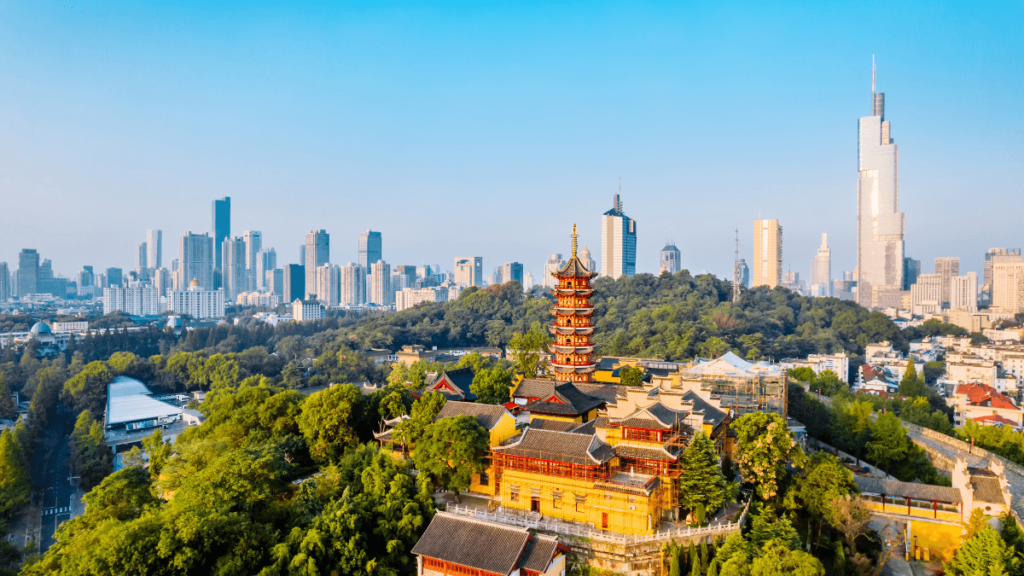
If you have extra time before leaving the city, you can have a final walk through Jiuhuashan Park, home to a Buddhist temple and the Sanzang Pagoda. Alternatively, you can explore Xuanwu Lake Park.
Hangzhou – Charming Lakeside Scenery
Tickets & Tours in Hangzhou
Day 7. West Lake, Longjing Tea Village & Qinghefang Old Street
If you look up the definition of Chinese classical beauty, Hangzhou’s West Lake might be the picture next to it. Surrounded by green hills and pagodas, the lake’s still waters reflect a scene so serene it feels almost painted. If you only have one day in Hangzhou, stay by the West Lake and explore as much as possible.
If you have time for a second day in Hangzhou, spend your morning by the lake, then head to Longjing Tea Village in the hills southwest of the city. Here, visitors can explore tea plantations and learn more about one of the activities of the town: growing tea leaves.
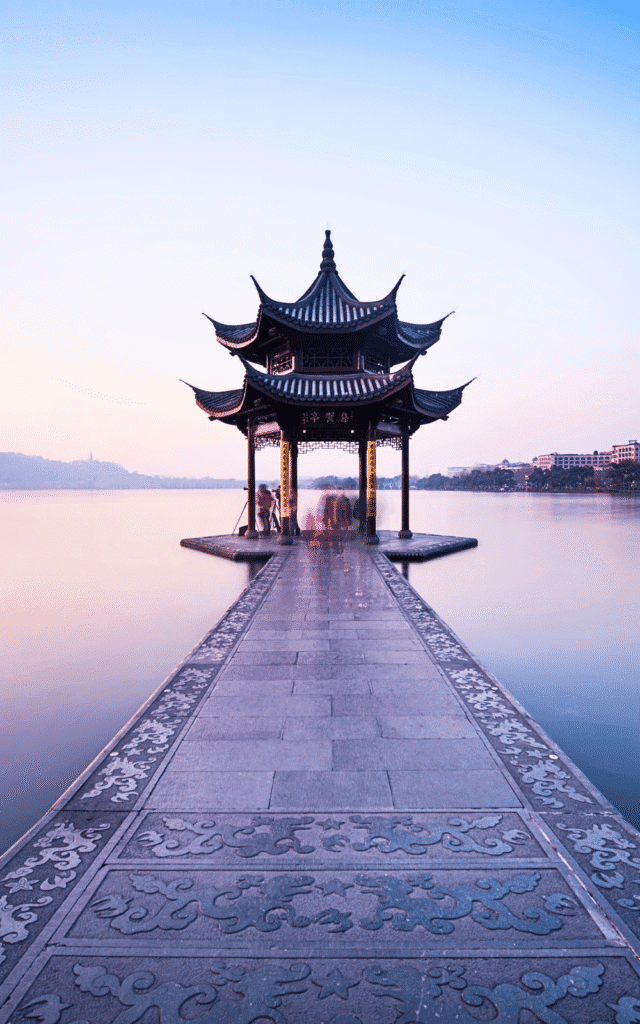
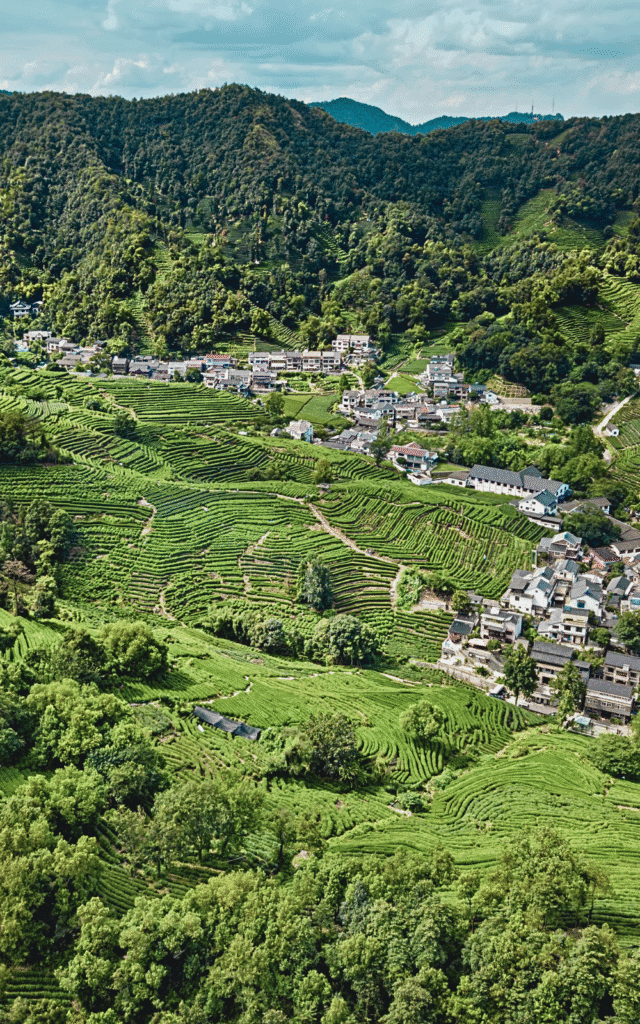
In the late afternoon, make your way to Qinghefang Old Street, a lively pedestrian road perfect for souvenir hunting and people-watching. You’ll find small shops selling local snacks, traditional crafts, and—of course—more tea. It’s a fun, slightly chaotic contrast to the calm of the lake and hills.
This is a great spot to try some local cuisine. Whether you go for something spicy, savory, or sweet, you’ll find many street food stalls and restaurants that will not disappoint you.
More About Hangzhou
This blog post was all about the best 7 day China Itinerary: a route that lets you discover four unique cities without having to move all across the entire country. From ancient gardens in Suzhou to tea fields in Hangzhou, this trip gives you an authentic taste of what China is about without longer train journeys—already feeling inspired to book your next short holiday?
Head over to my Complete China Travel Guide for everything you need: travel tips, cultural insights, packing lists, and more to help you plan your adventure!
Did you find it helpful? 📌 Save it on Pinterest!
